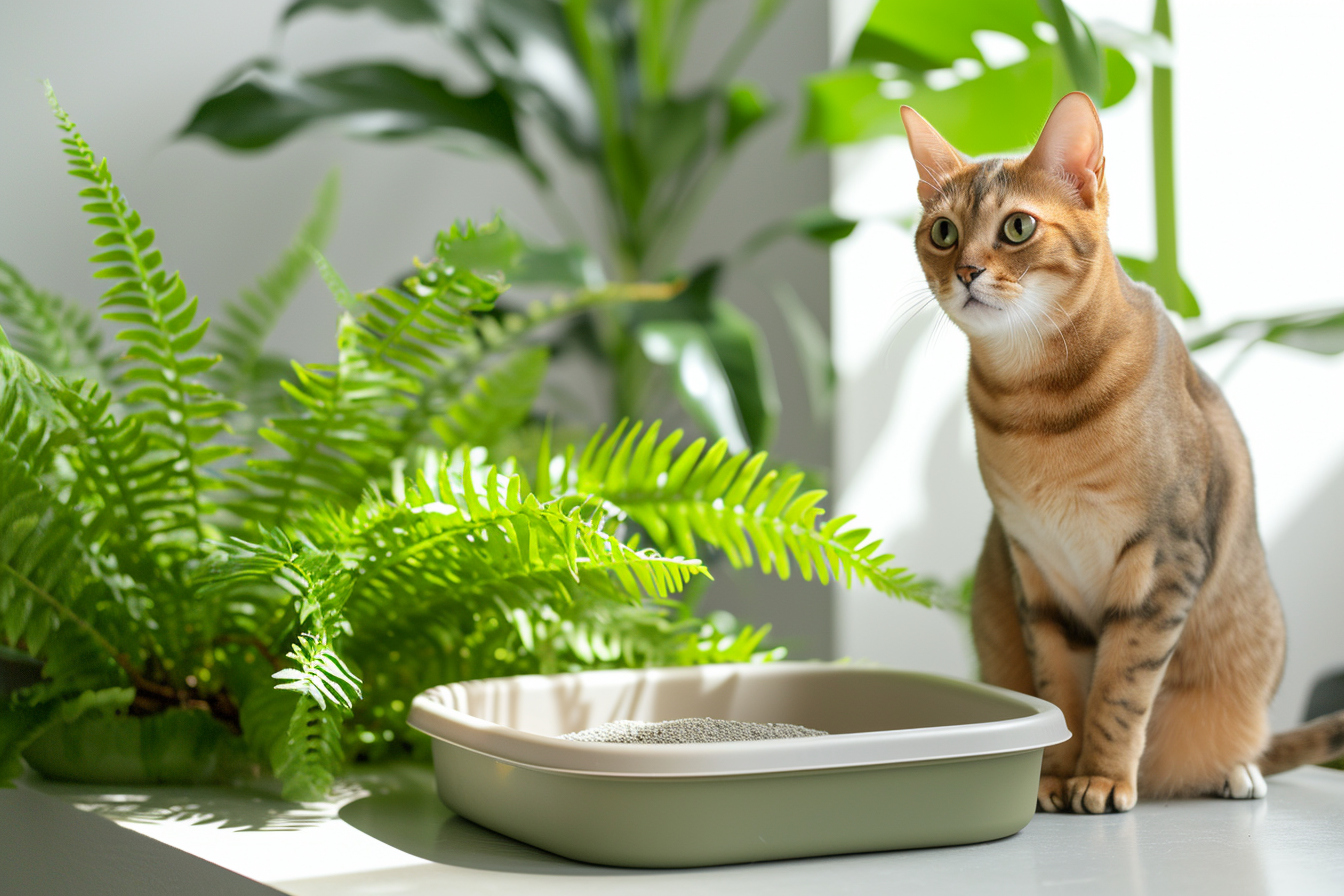Cat owners often face various dilemmas when it comes to caring for their feline companions, especially in the confined space of an apartment. Among these concerns, waste management and the choice of litter are essential, not only for the well-being of the animal and the cleanliness of the home, but also for the environmental impact. An ecological litter is proving to be an increasingly preferred option, both for its environmental advantages and for its benefits for the health of the cat and the convenience for the owner.
The environmental issue of traditional litters
Traditional litters pose a serious ecological problem. Often composed of clay or silica, they are extracted using mining methods that disrupt ecosystems and consume non-renewable resources. In addition, these litters, once discarded, end up in landfills where they do not decompose, thus contributing to the accumulation of waste.
When we become aware of this impact, choosing an ecological litter becomes a responsible approach, aligned with a sustainable and environmentally friendly life.
Benefits of eco-friendly litters
Respect the environment
Ecological litters are generally made from biodegradable materials such as wood, recycled paper, corn or even wheat. These materials decompose naturally and can sometimes even be composted, significantly reducing the carbon footprint linked to the management of our pets’ waste.
Cat health
Ecological litters are also beneficial for the cat’s health. They are often less dusty and fragrance-free, which reduces the risk of allergic reactions or respiratory problems in sensitive cats. In addition, they are free of chemicals that can be found in some conventional litters.
Comfort in use
In terms of comfort of use, several ecological litters offer absorption and odor control capacity comparable to traditional litters. Some options are also lighter, making cleaning and transporting the litter less of a hassle.
How to choose the ideal ecological litter for your cat?
Assess the environmental impact
One of the first criteria to consider is the environmental impact of the product. You should look for litters made from renewable materials and preferably produced sustainably and ethically. Check the labels and certifications that can attest to the manufacturer’s commitment to the environment.
Consider your cat’s health
Each cat is unique and may have different sensitivities. Be sure to choose a litter that is not only environmentally friendly but also safe for your pet. A litter box that is low dust, free of artificial scents, and made from natural materials is often the best option.
Consider the convenience factor
The ease of maintaining the litter is also a key element. Is it easy to clean and change? Can it be composted? Does its agglomeration capacity allow waste to be easily removed without having to replace the entire contents of the bin? These questions are essential for maintaining a clean environment without excessive effort.
Analyze the quality/price ratio
Even if the intention is to make an environmentally friendly choice, the financial aspect cannot be ignored. An ecological product is often perceived as more expensive. However, its lifespan, absorption capacity and odor control must be taken into account to assess whether the initial additional cost can translate into long-term savings.
Test different options
Don’t hesitate to experiment with different brands and types of eco-friendly litters. As with any change, the cat may need time to get used to the new texture or smell. Observe your cat’s reaction and adjust your litter choice accordingly.
Ecological materials to explore
Wood-based litter
Wood-based litter is a popular choice among eco-friendly options. Usually made of pine, cedar or recycled firewood, it is not only biodegradable but also has natural odor masking properties. You must ensure that the wood is untreated and comes from sustainably managed forests.
Recycled paper litter
Made from recycled paper, this litter is a gentle alternative for cats with sensitive paws. It is also a good option for young kittens who might be tempted to ingest the litter, as paper is less dangerous than clay pellets.
Plant-based litter
Plant-based litters, such as those made with corn, wheat or walnut husks, are excellent eco-friendly alternatives. In addition to their biodegradability, they often offer good agglomeration capacity which facilitates cleaning.
Recycled silica litter
Although silica litter is not the most eco-friendly due to its extraction and non-biodegradability, some brands offer more eco-friendly options with recycled silica. These products tend to extend the life of the litter, which reduces consumption.
Tips for a smooth transition to eco-friendly litter
The transition to a new litter box must be gradual to prevent the cat from rejecting its new box. Start by mixing a little of the new litter with the old and gradually increase the proportion over time. Pay attention to your cat’s reactions and adjust if necessary.
Appropriate maintenance to optimize use
Although eco-friendly litter is designed to be more environmentally friendly, its effectiveness will also depend on how it is maintained. Regular cleaning of the litter box is essential. It is recommended to remove droppings daily and change the litter completely according to needs and manufacturer’s instructions.
Daily choices like the type of litter used have a considerable impact on the environment. By adopting ecological litters, not only do we contribute to the preservation of our planet, but we also ensure the health and comfort of our precious four-legged companions. With an increasingly diverse range of litter, moving towards sustainable solutions is more accessible than ever. Exploring these alternatives is a significant step towards a more eco-responsible lifestyle and increased harmony between our living spaces and animal welfare.
There is still much to discover and perfect in the field of eco-friendly litters, and future innovations promise to make these products even more attractive to environmentally conscious house cat owners.












